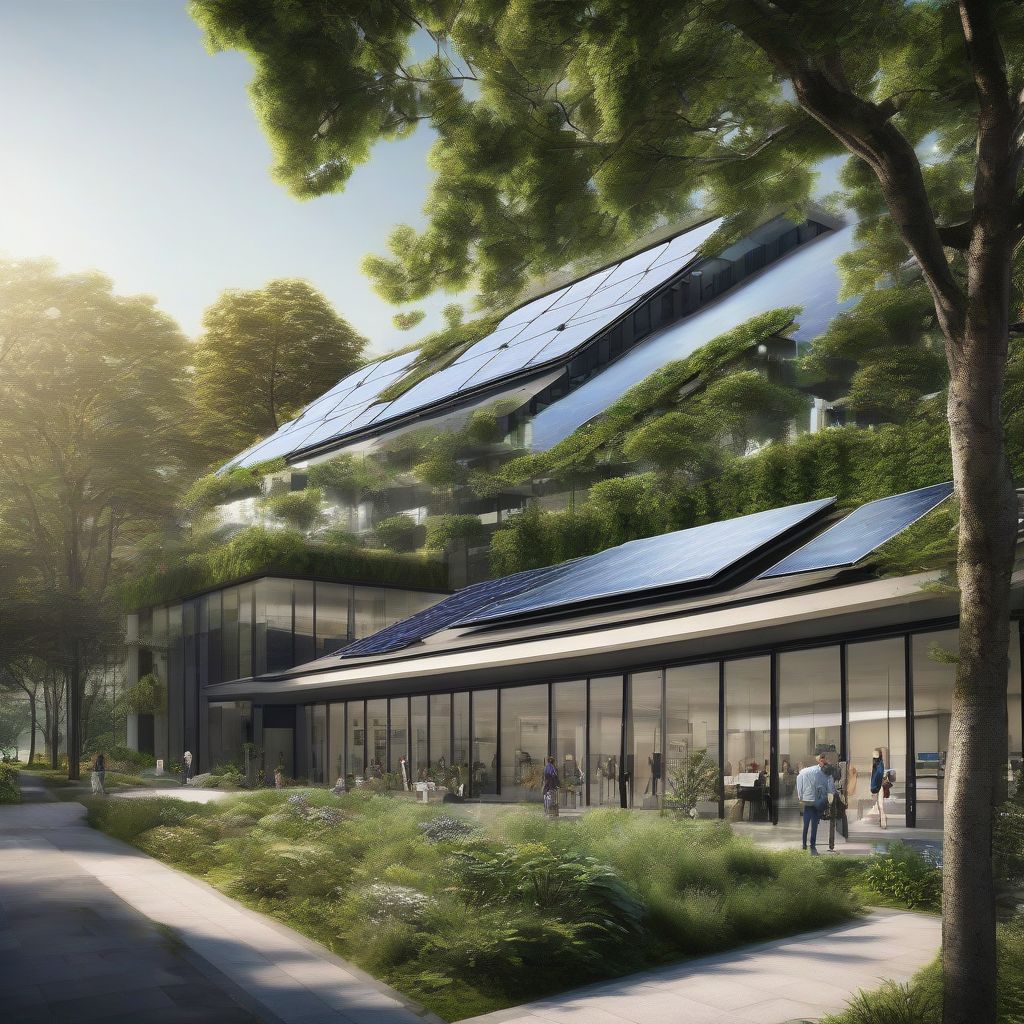Imagine a world where buildings don’t just stand tall but also tread lightly on our planet. This is the vision behind LEED certification – a globally recognized symbol of sustainability achievement in building design, construction, operation, and maintenance.
Whether you’re a seasoned developer or just starting your green building journey, this guide will walk you through the ins and outs of LEED certification, empowering you to create environmentally friendly and healthy spaces.
Understanding LEED: What Does It Stand For?
LEED stands for Leadership in Energy and Environmental Design. Developed by the U.S. Green Building Council (USGBC), it’s a comprehensive rating system that evaluates the environmental performance of buildings across various key areas.
Think of it as earning merit badges in sustainability. Points are awarded based on your building’s performance in categories like:
- Sustainable Sites: Choosing location wisely, reducing environmental impact during construction, and minimizing heat island effect.
- Water Efficiency: Implementing strategies to conserve water both indoors and outdoors.
- Energy and Atmosphere: Prioritizing energy efficiency, using renewable energy sources, and minimizing greenhouse gas emissions.
- Materials and Resources: Utilizing sustainable and recycled materials, reducing waste during construction, and promoting sustainable purchasing practices.
- Indoor Environmental Quality: Creating healthier and more comfortable indoor spaces by optimizing ventilation, maximizing natural light, and choosing low-emitting materials.
The Path to LEED Certification: A Roadmap
Obtaining LEED certification is a structured process that requires careful planning and execution. Here’s a step-by-step breakdown:
1. Assemble Your Green Team:
Just like in any good team effort, achieving LEED certification requires a collaborative approach. Assemble a team of professionals, including architects, engineers, contractors, and LEED consultants. Their expertise will be invaluable throughout the process.
2. Choose Your LEED Rating System:
LEED offers various rating systems tailored to different building types and project scopes. Common ones include:
- LEED BD+C: New Construction and Major Renovations
- LEED ID+C: Interior Design and Construction
- LEED O+M: Existing Buildings: Operations and Maintenance
- LEED Homes: Homes and Multifamily Low-Rise
Selecting the right rating system ensures you’re focusing on the most relevant sustainability aspects for your project.
3. Establish Your Baseline and Set Goals:
Before you begin, it’s crucial to assess your project’s starting point. Analyze energy and water consumption data (if available), evaluate site conditions, and identify potential areas for improvement. This baseline assessment will help you set achievable LEED goals and track progress effectively.
4. Implement Sustainable Strategies:
This is where the rubber meets the road – putting your sustainability plans into action. From choosing energy-efficient appliances to installing low-flow fixtures and utilizing recycled building materials, each decision contributes to earning LEED points.
5. Document and Submit for Review:
Thorough documentation is key to demonstrating your project’s compliance with LEED requirements. Your LEED consultant will guide you through the documentation process, ensuring all necessary paperwork is submitted accurately and on time.
6. Earn Your LEED Certification:
Once your project is reviewed and approved, you’ll receive your hard-earned LEED certification. This prestigious recognition showcases your commitment to sustainability, enhances your building’s marketability, and contributes to a healthier planet.
 LEED Certified Building
LEED Certified Building
Benefits of LEED Certification: Reaping the Rewards
Investing in LEED certification isn’t just good for the environment – it makes good business sense too. Here’s why:
- Reduced Operating Costs: LEED buildings are designed for energy and water efficiency, translating into lower utility bills and significant cost savings over time.
- Increased Asset Value: LEED certification enhances your building’s market value and appeal to tenants. Studies show that green buildings command higher rents and occupancy rates.
- Healthier Indoor Environments: LEED prioritizes indoor environmental quality, leading to healthier, more productive spaces for occupants. Improved air quality, natural light, and thermal comfort contribute to occupant well-being and satisfaction.
- Environmental Stewardship: LEED buildings reduce their environmental footprint through energy conservation, water savings, and waste reduction, playing a crucial role in mitigating climate change.
- Enhanced Brand Reputation: Achieving LEED certification demonstrates your commitment to sustainability, enhancing your brand reputation and showcasing your corporate social responsibility.
Common Questions About LEED Certification:
Q: How much does it cost to get LEED certified?
A: The cost of LEED certification varies depending on factors like project size, complexity, and the desired LEED rating level.
Q: Is LEED certification mandatory?
A: While LEED certification is voluntary in most jurisdictions, it’s increasingly becoming a standard requirement for government buildings and projects seeking public funding.
Q: How long does it take to get LEED certified?
A: The LEED certification timeline can range from several months to a couple of years, depending on the project’s scope and complexity.
[amazon bestseller=”LEED certification guide”]
Building a Sustainable Future: One LEED Certification at a Time
Achieving LEED certification is a journey that requires dedication and collaboration. But the rewards – a healthier planet, cost savings, and healthier buildings – are well worth the effort.
By embracing sustainable building practices, we can create spaces that are not only aesthetically pleasing but also environmentally responsible. Start your LEED journey today and be a part of a global movement towards a greener, more sustainable future.
